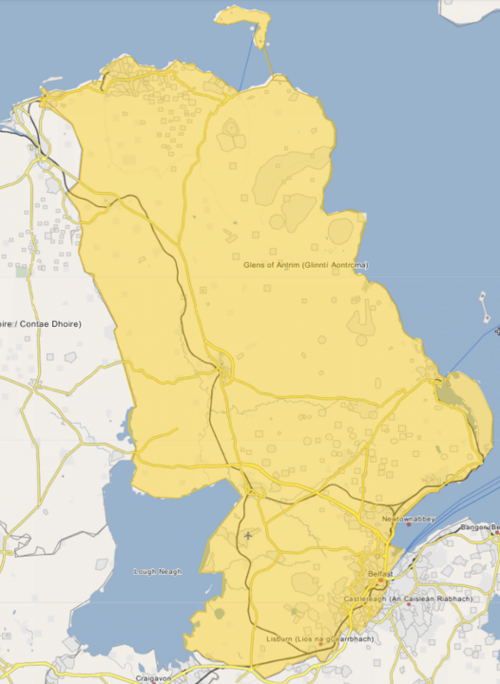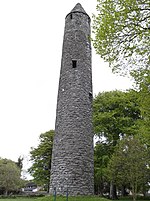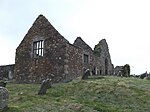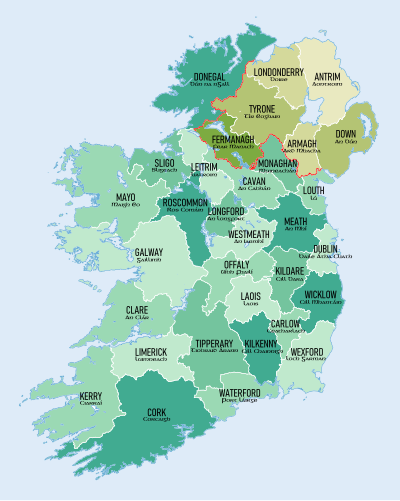Loading AI tools
The smaller establishments such as monastic cells and notable monastic granges (particularly those with resident monks) and camerae of the military orders of monks (Knights Templars and Knights Hospitallers) are included. The numerous monastic hospitals per se are not included here unless at some time the foundation had, or was purported to have, the status or function of an abbey, priory, or preceptory/commandery.
Communities/provenance: shows the status and communities existing at each establishment, together with such dates as have been established as well as the fate of the establishment after dissolution, and the current status of the site.
Formal name or dedication: shows the formal name of the establishment or the person in whose name the church is dedicated, where known.
Alternative names: some of the establishments have had alternative names over the course of time. In order to assist in text-searching such alternatives in name or spelling have been provided.
| * | current monastic function |
|---|---|
| + | current non-monastic ecclesiastic function |
| ^ | current non-ecclesiastic function |
| = | remains incorporated into later structure |
| # | no identifiable trace of the monastic foundation remains |
| ~ | exact site of monastic foundation unknown |
| ø | possibly no such monastic foundation at location |
| ¤ | no such monastic foundation |
| ≈ | identification ambiguous or confused |
Locations with names in italics indicate probable duplication (misidentification with another location) or non-existent foundations (either erroneous reference or proposed foundation never implemented).
| NIEA | Scheduled Monument (NI) |
| NM | National Monument (ROI) |
| C.I. | Church of Ireland |
| R.C. | Roman Catholic Church |

Aghnakilla Monastery (approx.)
Antrim Monastery
Ardclinis Friary
Armoy Monastery
Ballyprior Priory
Bonamargy Friary
Carrickfergus Friary
Church Island Abbey, Lough Beg
Connor Monastery Cathedral
Cranfield Monastery
Culfeightrin Monastery
Drumeeny Monastery
Druim La Croix Abbey
Drumtullagh Monastery
(approx.)
(approx.)
Dundesert monastic site
Duseverick monastic site
(approx.)
(approx.)
Glenarm Friary
(site)
(site)
Glenavy Monastery
Glynn monastic site
(approx.)
(approx.)
Inispollan monastic site
(approx.)
(approx.)
Inver Friary (approx.)
Kells Abbey
(approx.)
(approx.)
Kilroot Monastery
(approx.)
(approx.)
Lambeg Friary
Layd Friary
Magheramorne Monastery
Massereene Friary(approx.)
Muckamore Priory
Portglenone Abbey
Portmore Monastery
Rams Island Monastery
Rashee Monastery
(approx.)
(approx.)
Rath-easpuic-innic Monastery
(approx.)
(approx.)
Rathlin Monastery
Skerry Monastery
Woodburn Abbey
Locations of monastic houses in County Antrim
| Foundation | Image | Communities & Provenance | Formal Name or Dedication & Alternative Names | Online References & Location |
|---|---|---|---|---|
| Aghnakilla Monastery ø | supposed early monastery dissolved before 11th century | Achad-cinn; Achad-na-cille; Aughnakeely | [1][2] 54°54′34″N 6°23′41″W (approx) | |
| Antrim Monastery |  |
Gaelic monks possibly founded by St Comgall of Bangor; plundered 824; plundered 1018; destroyed 1147 |
Oen-truib; Aen-truib; Aentreb; Aontruibh; Eantrobh; Oentrebh | [3] 54°43′26″N 6°12′32″W |
| Ardclinis Friary ø | tradition of house of Franciscan Friars, Third Order Regular — evidence lacking | [4] 55°03′23″N 6°00′40″W | ||
| Armoy Monastery ø |  |
supposed early monastery, founded by St Olcan; dissolved before 11th century |
Airthir-maige; Domnach-; Ethirmoy | [5][6] 55°08′05″N 6°18′38″W |
| Ballycastle Friary ≈ | building called 'abbey', apparently built 1612 by Randal Mac Donnell, Earl of Antrim; standing until the Reformation; probably Bonamargy Friary (v. infra) |
|||
| Ballyprior Priory | Premonstratensian Canons — from Woodburn (community founded at Woodburn before 1326); transferred here 1542-3; dissolved after 1565 |
Magee Island Priory | [7][8] 54°50′05″N 5°44′25″W | |
| Bonamargy Friary, Ballycastle |  |
Franciscan Friars, Third Order Regular founded c.1500 (c.1475) by Rory MacQuillan, Lord of Reute (or Mac Donell); dissolved 1584; burned 1589; granted to the descendants of the founder Franciscan Friars, First Order Regular repaired & re-occupied at the petition of Father Conor Mac a'Bhaird, as a rest centre for missionaries 1626–1642, restored 1931; (NIEA) |
Bunanmargaigh | [9] 55°12′07″N 6°13′52″W |
| Carrickfergus Abbey | Premonstratensian Canons daughter house of Dryburgh; priory founded before c.1183; raised to abbey status 1212; dissolved after 1320-6; succeeded by Woodburn (v. infra) |
|||
| Carrickfergus Friary # | Franciscan Friars Minor, Conventual founded 1232–48 by Hugh Lacy, Earl of Ulster; Observant Franciscan Friars reformed 1497; dissolved 1540; restored by Queen Mary 1557; friars expelled 1560; granted to Sir Edmund Fitzgerald, who assigned it to Sir Arthur Chichester, who built a castle on site 1610; used as a munitions store, rebuilt as Joymount House 1618; new house built by friars 1626 |
Carrac-fergusa; Cragfargas; Gracfergos; Grafergosensis | 54°42′56″N 5°48′19″W | |
| Church Island Monastery, Lough Beg | 54°47′24″N 6°29′05″W | |||
| Church Island Abbey, Lough Beg | ||||
| Clondrumalis Abbey ~≈? | Premonstratensian Canons, possibly located in County Antrim, possibly Woodburn | Woodburn? | ||
| Cluain Monastery ø+ | supposed early monastery founded by St Oclan; dissolved before 11th century; C.I. parish church built on site |
Kilcluain; Cell-chluaine | [10] | |
| Connor Monastery | church probably founded early 6th century by Mac Nissi (St Macnisse) (Oengus or Coemahan Breac); episcopal diocesan cathedral; diocese united with Down 1453 |
Coinnere; Condere; Coinnee | [11] 54°48′26″N 6°12′45″W | |
| Cranfield Monastery | early monastic site, patron St Eoghan; by tradition the burial place of St Olcan |
Maigi Cremc; Cremh-caille; Ecclesiaa de Crewill | [12][13][14] 54°42′15″N 6°21′49″W | |
| Culfeightrin Monastery ø | supposed early monastery founded 5th century by St Patrick; dissolved before 11th century |
Culechtrann; Kilfeutre; Magherintemple | [15][16] 55°11′32″N 6°12′44″W | |
| Drumeeny Monastery ø | supposed early monastery early monastic site, monks; founded 5th century by St Patrick, who left bishop Enan in charge; dissolved before 11th century |
Druim-findich; Druim-indeich; Druim Findich, Enán in; inDruim [Fh]indich, Enán; Ecclesia de Drum-Indich; Killeena Gobbin's Heir Castle | [17][18][19][20] 55°10′59″N 6°13′19″W | |
| Druim La Croix Abbey | Premonstratensian Canons daughter house of Dryburgh; founded before c.1250; dissolved after 1320-6; succeeded by Woodburn (v. infra) |
Druim La Croix; White Abbey | [21] 54°40′05″N 5°54′30″W | |
| Drumtullagh Monastery | grange founded 5th century by St Patrick | Telagh-Ceneoil-Oingusa; Tulach | [22][23] 55°09′31″N 6°23′35″W (approx) | |
| Dundesert Monastery | early monastic site, monks; coptic tradition? |
Disert Ilidh? Disert Uilaigh? | [24][25][26] 54°37′33″N 6°12′13″W | |
| Dunseverick Monastery | early monastic site, monks founded 5th century by St Patrick; first taken by Norsemen 871; destroyed 926 |
Dun-sebuirgi; Dun-sobairche | 55°14′14″N 6°26′30″W (approx) | |
| Erdamh Monastery ~ | early monastic site, suggested to be County Antrim[notes 1] | |||
| Glenarm Friary |  |
Franciscan Friars, Third Order Regular founded 1465 by Robert Bissett, cousin of Robert Bissett, Provincial of the Third Order in Ireland; dissolved during the reign of Queen Elizabeth?; granted to Alexander MacDonnell, ancestor to the Earl of Antrim; site now occupied by St. Patrick's C.I. parish church |
Gleann-arm | [27][28] 54°58′05″N 5°57′16″W |
| Glenavy Monastery | early monastic site founded by St Patrick; patron St Aidan, son of Colga; by tradition the burial place of the three daughters of St Comgall founder of Bangor Monastery |
Laathrach Patraic Lennewy, Ecclesia de, cum capella Lettir-phadruic Gleann Abhaich Lann Abhaigh | [29][30][31] 54°35′39″N 6°12′57″W | |
| Glynn Monastery | early monastic site monks; church founded 5th century by St Patrick |
Glinn Glenn-Fineachta; Glenn-Indechta | [32] 54°49′21″N 5°49′11″W (approx) | |
| Inispollan Monastery | early monastic site, monks in existence 5th century, in the time of St Patrick |
Inis-pollen | 55°07′15″N 6°04′15″W (approx) | |
| Inver Friary | Franciscan Friars, Third Order Regular founded 1500 by a Scottish nobleman, Phelim O'Neil; dissolved during the reign of Queen Elizabeth? also erroneously given as Inver, County Donegal; granted to James V. Claneboys |
54°50′51″N 5°50′24″W (approx) | ||
| Kells Abbey | purportedly founded before 514 (in the time of St Macnise); apparently a hermitage by 828 of Ceallach mac Condmaigh, anchorite of Disirt Ceallaigh (possible confusion with same place name in County Galway); Augustinian Canons Regular — Arroasian? founded after 1140; destroyed 1316 by Edward Bruce; rebuilt early 15th century?; dissolved 1 February 1542, surrendered to the commissioners of Henry VIII; extant remains on site of textile factory |
St Mary; The Augustinian monastery of Saint John the Baptist (1415) ____________________ Disert Abbey; de Diserto fonte-Conneri; Ceneles | 54°48′35″N 6°13′14″W (approx) | |
| Kilboedain Monastery ~ | early monastic site, monks church founded by St Boedan, abbot |
Cell-baedain; Cell-buadain; Kilscoba; possibly Ballywodan in Ardquin, or Ballibodan; Eiloseoba | ||
| Kilroot Monastery | early monastic site, founded in or after 412 by St Colman who was sent by St Ailbe of Emly | Cell-ruaid; Cell-ruad | 54°43′46″N 5°45′42″W (approx) | |
| Lambeg Friary | Franciscan Friars, Third Order Regular founded c.1500 by Phelim O'Neil (or M'Donnell); dissolved before 1572, probably destroyed by O'Neil to prevent use as a fort by the English |
Lambegg Friary; Limbeg Friary | [33] 54°31′55″N 6°01′01″W | |
| Layd Friary ø |  |
tradition of church now ruined belonging to Franciscan Friars purportedly founded by the sept of McFall (Macfaull) evidence lacking; also suggested as nuns or Dominican Friars |
Lead; Lede; Port Obe | [34] 55°05′31″N 6°03′00″W |
| Linally Monastery | erroneous reference to Lynally, County Offaly | |||
| Linn Monastery | early monastic site, nuns | |||
| Magheramorne Monastery | early monastic site, monks founded 5th century by St Patrick |
Domnach-mor-maige-damoerna | 54°48′49″N 5°46′03″W | |
| Massereene Friary | Franciscan Friars, Third Order Regular founded 1500 by Phelim O'Neil; dissolved during the reign of Queen Elizabeth?; granted to Sir Arthur Chichester, Baron of Belfast 1621 |
Mas-a-rioghna; Masraona; Masseryne; Masevin | [35] 54°42′30″N 6°13′43″W (approx) | |
| Muckamore Monastery # | Gaelic monks founded 585? (550) By St Colman Elo |
Mag-comair; Moccumur; Mocmur; Mucimore; Muckmore; Mugcomuir | [36] 54°42′05″N 6°11′20″W | |
| Muckamore Priory | Augustinian Canons Regular — Victorine founded before 1185; dissolved 1540-1; granted to the Longford family 1639; thatched house built on site 17th century replaced by house built and landscaped gardens before 1833, extant, without public access | |||
| Portglenone Abbey Church * | Cistercian monks, O.C.S.O. founded 1948 from Baltinglass Abbey, Co Waterford; extant |
Abbey of Our Lady of Bethlehem, Portglenone; | [37] 54°52′13″N 6°28′31″W | |
| Portmore Monastery Ballinderry |
 |
early monastic site, founded 6th century by St Lua; St Lua known in Scotland as St Moluag |
Laloo; Lann Lua; La Lu | [38][39][40] 54°33′01″N 6°16′29″W |
| Portmuck 'Abbey' | Cistercian monks apparently a grange of Inch |
|||
| Rams Island Monastery | early monastic site, monks founded before 1056? by Gormgal? |
Inis-darcairgrenn in Loch-n-Echach; Lann-Abhaid; Inisgatden | [41] 54°35′06″N 6°18′20″W | |
| Rashee Monastery | early monastic site, founded 5th century by St Patrick | Raith-sithe; Rath-sithe | [42][43] 54°46′20″N 6°01′28″W (approx) | |
| Rath-easpuic-innic Monastery | early monastic site, founded 5th century by St Patrick | Raith-Epscuip-Fhindich; Capella de Corcrib; Corgrippe; Gortgrib | [44][45][46] 54°35′13″N 5°50′22″W (approx) | |
| Rathlin Monastery |  |
attempted foundation c.546 by St Comgal of Bangor thwarted when driven away by armed men; church of Rechrann (identified as Rathlin[notes 2]) founded 635 by Segene, Abbot of Iona; burned by Norsemen 795; Reachru (identified as Rathlin[notes 3]) plundered 1038; possession of the island gained by Earl of Essex, Lord Deputy, 1558 |
Reachrain; Raghera; Rachlainn; Rachlin; Rachlin Island; Raghlin | [47][48] 55°17′36″N 6°11′52″W |
| Rathmore Monastery | suggested to be Ratheaspuicinnic,[notes 4] an early fortress[notes 5] | |||
| Serade Kaill and Bedamegcan Friary ~ | Franciscan Friars, Third Order Regular founded 1445, Archdeacon of Connor appointed to license the building of a monastery by Eugenius IV; dissolved ? |
Bademeghcadab Straid Friary? | ||
| Skerry Monastery | founded by St. Patrick; mentioned by Tírechan c.670 as – ad montem Scirte ad locum petrae.. vestigium pedis; N/E of the old church ruins lies a patch of rock with a depression known as St Patrick's footprint; close by the church is Tubernacool holy well; Slemish mountain lies two miles south-east across the river Braid valley. |
Schire Padruic; Shirec Archaille; rock of Skirit; Schirich | [49][50][51][52] 54°54′50″N 6°08′45″W | |
| Templepatrick Preceptory ø | town said to be named for a Knights Hospitaller foundation — evidence lacking | Villa Hugonis de Logan | ||
| Woodburn Abbey | Premonstratensian Canons daughter house of Dryburgh, Scotland; founded before 1326 (1242), by John de Courcy, in succession to Carrickfergus and Druim La Croix (v. supra); dissolved 1 March 1542 [sic] (1542–3), surrendered to the commissioners of Henry VIII; canons transferred to Ballyprior; partly demolished after 1558; site now occupied by Carrickfergus Industrial Centre |
The Holy Trinity; St Mary; ____________________ Goodborn Priory | [53] 54°42′29″N 5°50′12″W | |
 |
- Mervyn Archdall, Monasticon Hibernicum, 1786, however not mentioned by W. Reeves, Ecclesiastical Antiquities of Down, Connor and Dromore, 1847
- Rathlin — identified with Rechrann by J. O'Donovan (identifications from notes in the Annals of the Four Masters, edited by J. O'Donnovan, 1848–51) and W. Reeves, Ecclesiastical Antiquities of Down, Connor and Dromore, 1847
- Rathlin — identified with Reachru by J. O'Donovan (identifications from notes in the Annals of the Four Masters, ed. J. O'Donnovan, 1848–51)
- Rathmore identified as Ratheaspuicinnic — M. Archdall, Monasticon Hibernicum, 1786
- Ratheaspuicinnic — W. Reeves, Ecclesiastical Antiquities of Down, Connor and Dromore, 1847, pp.279–81
Wikiwand in your browser!
Seamless Wikipedia browsing. On steroids.
Every time you click a link to Wikipedia, Wiktionary or Wikiquote in your browser's search results, it will show the modern Wikiwand interface.
Wikiwand extension is a five stars, simple, with minimum permission required to keep your browsing private, safe and transparent.